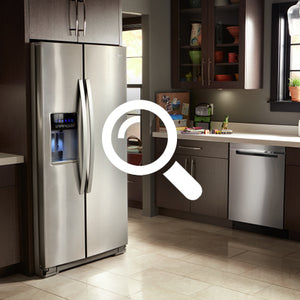Guest post provided by Remologie
How do I know if I have a sleep disorder and what does that mean?
Sleep is one of the most important aspects of overall wellness, and yet, many people struggle with getting the recommended amount of sleep every night, so why is that? Aside from poor sleep hygiene, a sleep disorder may be the cause.
The only way to know for certain that you have a sleep disorder is to get a formal diagnosis from a qualified sleep doctor. However, there are some signals that can indicate the presence of a sleep disorder. Do you recognize any of the following symptoms?
- You frequently experience difficulty when trying to sleep
- You often experience fatigue during the day, regardless of how much sleep you got the night before
- You sometimes experience a decline in cognitive function during the day and find that even simple tasks can be harder to perform
- You experience fatigue while driving
- You experience memory difficulties
- You often feel the need to nap, but may feel unrested afterwards
These are all warning signs of an underlying sleep disorder. People who suffer from sleep disorders often have no idea of their condition. Often, the presence of a sleep disorder is discovered because of the observations of the patient’s significant other.
Obstructive Sleep Apnea
Sleep Apnea is a condition where a patient stops breathing during sleep, and it can be caused by a few different factors. The most common form of this condition is Obstructive Sleep Apnea (OSA), where breathing stops momentarily during sleep because the tissues in the back of the throat relax and block airflow to the lungs. Snoring is a common occurrence with patients who suffer from OSA. People suffering with OSA often wake up during the night because of breathing stoppages, which can happen many times per hour. The condition can also result in excessive fatigue during the day.
Sleep Apnea can also occur from biological causes, when certain parts of the brain fail to tell the muscles to operate to facilitate breathing; this form is known as Central Sleep Apnea, and it is not as common as OSA. While snoring is common with OSA, it is not common with Central Sleep Apnea. In some circumstances, patients can also experience both types of symptoms, which is known as Mixed Sleep Apnea.
Untreated OSA can result in cardiovascular disease, type-2 diabetes, and other serious conditions. OSA is diagnosed by a sleep doctor after you have undergone a sleep study, which can often be done overnight in your own home. For a home sleep study, you will take home the testing equipment, which will monitor your breathing and record the data for review.
After diagnosis, the sleep doctor may prescribe medication or Continuous Positive Airway Pressure therapy via a medical device, commonly referred to as a CPAP machine. A CPAP machine is a non-pharmaceutical intervention that fills the airways with pressurized air. The pressurized air keeps the airway open, improving respiration and sleep quality.
Using a CPAP machine every night can help to reduce or even eliminate symptoms. With treatment, the incidents of apnea should be substantially reduced.
Insomnia
At its most basic definition, insomnia is the inability to fall asleep, stay asleep, or fall back asleep. It can range from a short-term problem lasting only days to a chronic sleep disorder that can occur regularly for a long period of time. You should consult your general practitioner or your family doctor for help with insomnia.
Insomnia can be caused by a number of factors. Things as simple as the timing of caffeine intake can have a substantial impact on the ability to sleep well. People who are undergoing stress and worry can also experience insomnia.
Simple lifestyle changes can improve the symptoms of insomnia, depending on the underlying causes. However, some incidents of insomnia are rooted in physiological causes and may require more serious medical intervention. Your doctor may prescribe medication for short-term use, but chronic disorders may not respond well to this form of therapy. Your doctor may refer you for a sleep study to determine a more appropriate course of treatment.
While there are a number of over-the-counter sleep aids that can be purchased without a prescription, you should consult with your doctor and obtain approval before taking any of them. They can interact with other medications, causing adverse effects, and recent studies have also identified an association between their use and an increased risk of developing dementia or Alzheimer’s disease later in life.
Many patients find a benefit from taking melatonin. While melatonin is usually found in stores alongside herbal remedies, it is actually a hormone that is normally produced by the pineal gland in the human brain. It is released as part of the body’s circadian rhythm in response to fluctuating light levels, and its presence in the body promotes and encourages sleep. Exposure to bright light during the day suppresses melatonin, while increasing darkness triggers its release as the light of day begins to dim.
Ironically, while fatigue is more commonly associated as a symptom of OSA, insomnia can also be caused by untreated OSA. A sleep study will record the data to determine if you experience apneas during your sleep, and a sleep doctor will interpret that data and make a diagnosis and treatment recommendation, which could consist of a medical appliance or a medical device, such as a CPAP machine.
Restless Leg Syndrome and Periodic Limb Movement Disorder
Restless Leg Syndrome is characterized by the irresistible or uncontrollable urge to move one’s legs, although the arms and other parts of the body can also sometimes be affected. The resulting repetitive movement is due to discomfort, which may take the form of unpleasant sensations of things crawling on the skin, or even downright pain; moving the limb seems to help to reduce these sensations for people who suffer from these symptoms. While the symptoms of Restless Leg Syndrome can occur at any time during the day, patients suffering from this condition can experience worsening symptoms during periods of inactivity, and some sufferers report experiencing the most severe symptoms at bedtime. The diagnosis of this condition is usually based on the reported experience of the patient.
Periodic Limb Movement Disorder occurs during sleep, so while it has similar effects to Restless Leg Syndrome, a person who suffers from Periodic Limb Movement Disorder may suffer from the resulting negative sleep effects, which can include excessive daytime fatigue or interrupted nighttime sleep. A special sleep test called a Polysomnography may be required to confirm or rule out a diagnosis of this disorder.
Treatment Options
There are a variety of treatment options available for sleep disorders, and the appropriate solution will vary from patient to patient, depending on the symptoms being treated. Some patients may be prescribed medication; some patients may be prescribed a medical appliance to wear while sleeping, or prescribed a medical device in the form of a CPAP machine.
Remologie can help arrange a home sleep study and a consultation with a sleep doctor to diagnose a sleep disorder. If you are diagnosed with a sleep disorder, Remologie can help you find the appropriate treatment for you by providing products to treat obstructive sleep apnea, as well as a sleep apnea supplies subscription program.
Remologie delivers all the solutions for worry-free sleep support. If you feel that your sleep is being affected by a sleep disorder, contact Remologie to get help!










